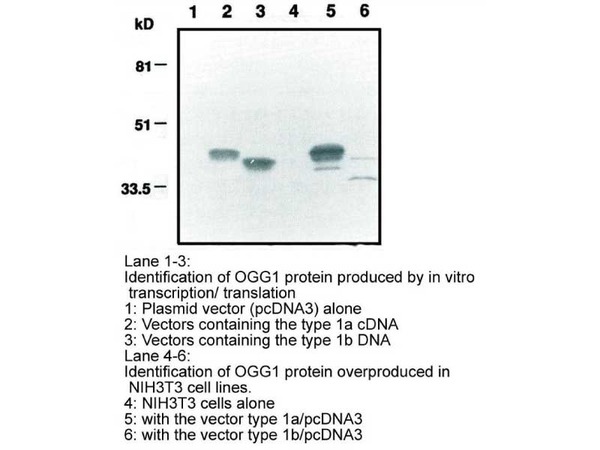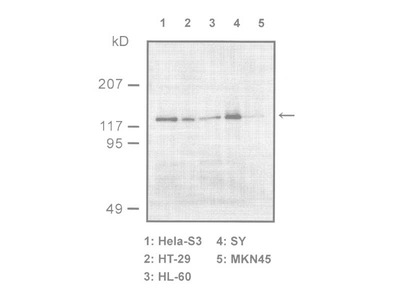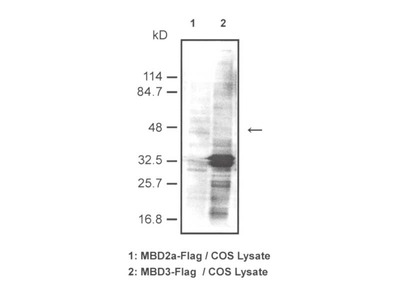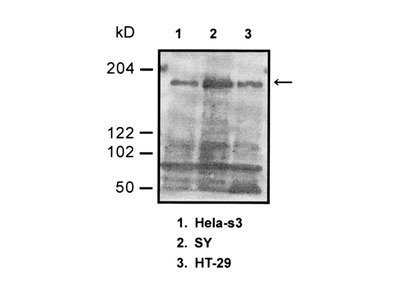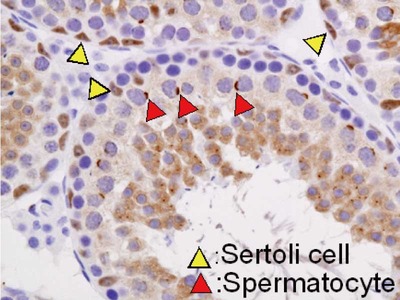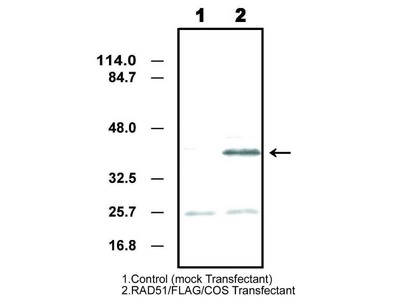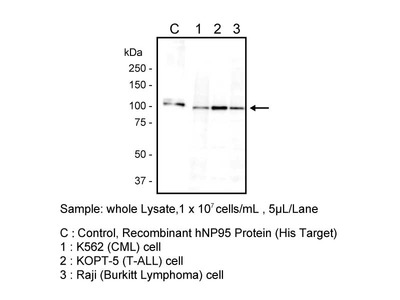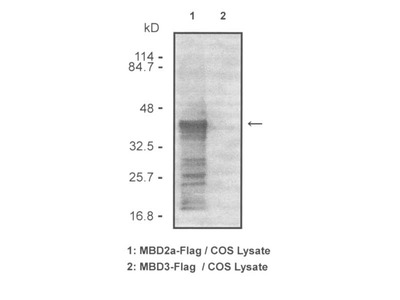- HOME >
- For Researchers >
- Product Search >
- Search Result >
- #10171 Anti-Human OGG1 (7E2) Mouse IgG MoAb
Product Search
#10171 Anti-Human OGG1 (7E2) Mouse IgG MoAb
- Intended Use:
- Research reagents
- Application:
- WB
- Package Size1:
- 100 μg
- Package Size2:
- 10 μg
- Note on Application Abbreviations
- WB:Western Blotting
※ The product indicated as "Research reagents" in the column Intended Use cannot be used
for diagnostic nor any medical purpose.
※ The datasheet listed on this page is sample only. Please refer to the datasheet
enclosed in the product purchased before use.
Product Overview
Product Overview
| Product Code | 10171 |
|---|---|
| Product Name | Anti-Human OGG1 (7E2) Mouse IgG MoAb |
| Intended Use | Research reagents |
| Application | WB |
| Species | Human |
| Immunizing antigen | Recombinant Human OGG1 |
| Source | Mouse-Mouse hybridoma (X63 - Ag 8.653 × BALB/c mouse spleen cells, supernatant) |
| Clone Name | 7E2 |
| Subclass | IgG1 |
| Purification Method | Affinity purified with Protein A |
| Specificity | Confirmed by human OGG1 transfectant |
| Package Form | Lyophilized product from 1 % BSA in PBS containing 0.05 % NaN3 |
| Storage Condition | 2 - 8℃ |
| Poisonous and Deleterious Substances | Applicable |
| Cartagena | Not Applicable |
| Package Size 1 | 100 μg |
| Package Size 2 | 10 μg |
| Remarks1 | The commercial use of products without our permission is prohibited. Please make sure to contact us and obtain permission. |
Product Description
Product Description
Oxidative damage to DNA has been proposed to have a role in cancer and ageing. Oxygen-free radicals formed during normal aerobic cellular metabolism attack bases in DNA, and 7, 8-dihydro-8-oxoguanine (8-oxoG) is one of the adducts formed. Eukaryotic replicative DNA polymerases replicate DNA containing 8-oxoG by inserting an adenine opposite the lesion; consequently, 8-oxoG is highly mutagenic and causes G:C to T:A transversions. Genetic studies in yeast have indicated a role for mismatch repair in minimizing the incidence of these mutations. In Saccharomyces cerevisiae, deletion of OGG1, encoding a DNA glycosylase that functions in the removal of 8-oxoG when paired with C, causes an increase in the rate of G:C to T:A transversions.

